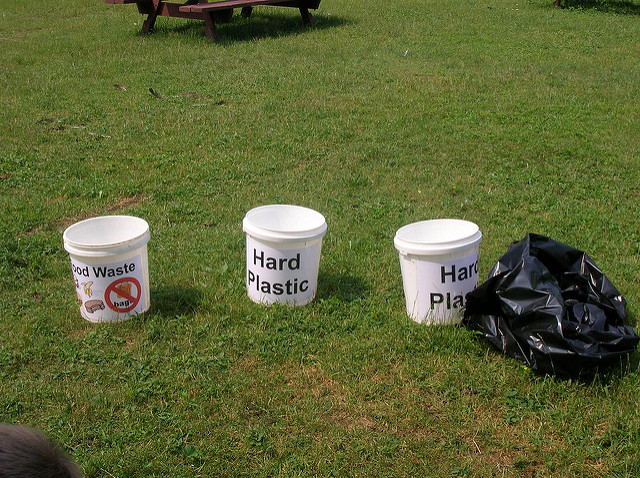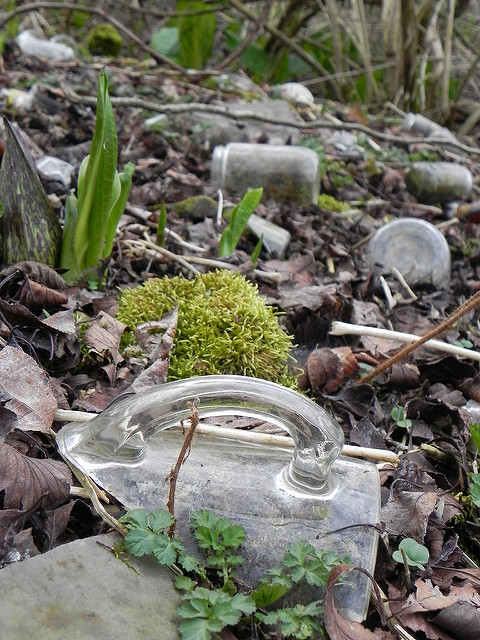My journey with stuff began as a child, when I looked through catalogs with longing eyes, dreaming of all the things that could fill my life with joy. In reality, most of that stuff was probably junk and it rarely arrived in my world regardless.
Stuff fills our world. There are phones, computers, food, containers, clothes, furniture and homes. All of these things are made of stuff: wood, metal, plastic, sugar and glass. All of the things we own are made of materials from nature, and what we own and what we do with it can have profound impacts on the world we live in.
Bananas are what made this topic really hit home. For whatever reason, I drove behind a store and saw a pile of bananas bigger than me piled next to a dumpster. The stuff that made them came from the soil of a tropical forest that was at least 1,000 miles and probably more away. They were grown, harvested and shipped to the United States, where they were put on a truck and delivered to the store. There, they sat neglected, growing browner. Eventually, they were thrown out by the dumpster. All the nutrients that made up the bananas were on their way to be dumped into a landfill, where those nutrients may remain locked away for centuries.

Some things can easily be composted or recycled.
These are the kinds of thoughts that make me take action. I took a class from the local master gardeners on composting. No food is thrown out at my house. It is carefully set out in compost bins, where it quietly decomposes into soil that is emptied on to gardens and berry bushes.
It is hard to get away from all the things that fill our lives. I took a test a few years ago that it would take two and a half earths to support the world if everyone lived my lifestyle. My lifestyle is certainly not one of glamour, fortune and extravagant spending, so other people in other places must be living quite poorly, without food and water. Perhaps they grew some of the bananas that were thrown out here and were paid little. In fact, a quick Google search shows that child labor and banana production are quite controversial, though that isn’t my point.
The point is that we are surrounded by things and rarely give thought to where they come from and where they go. What do we truly need? What is garbage and what could be reused. More importantly, how do we avoid creating garbage?
There are a few things I try, sometimes unsuccessfully, to do. I try to buy things that are high quality and may last for years. My mountain bike is the same bike I rode in college. It will soon be replaced for the first time in 25 years, not because it is a bad bike, but because my body needs a smoother ride. As my son gets into mountain biking, it will be pulled out for years more abuse.

Photo by Jeff Tome: People have always struggled with what to do with their broken or unused things. Once upon a time, they simply sunk them in the swamp.
This is my goal in purchasing new things. Will it last? Will it be high quality? Can I pass it on? This is especially hard with children, who see every piece of cheap glittery garbage as a golden bauble worth having and who grow out of everything in months. Clothes not ruined are passed on, as are toys. A recent pair of kids rain boots came with a card that said to pass the boots on or send them back to the company to recycle them. That made me happy.
There is no recycling in my town, so recycling is tucked away into the basement for a twice monthly hauling to the closest recycling center. There, the plastic, paper and cardboard are baled into huge blocks and sent off to be remade into new things. Metal and glass fill bin after bin. Televisions and other electronics are piled halfway to the ceiling.
It looks like a graveyard for junk, but it is a place of rebirth. Cans and bottles will be sent off to become new cans and bottles. Plastic jugs and bottles often become carpeting. Paper and cardboard are reborn as new paper.
Audubon Community Nature Center is committed to these things as well, and I am lucky to work there. Recycling and compost is collected from all the children that eat lunch there, as well as staff and volunteers.
Right now, staff and volunteers are poking around in the nooks and crannies of the building, looking for things that haven’t been used in years and are ready to move on to other people. As a group of people that is reluctant to throw things away, this is a great opportunity to find some wonderful things.
Audubon will place all the treasures out for re-homing on April 7 from 10:00 a.m until 3:00 p.m. There will be everything from books to aquariums to posters to surprise items that have lurked unused in corners for years. Some of those things may be exactly what you are looking for and all will be available for the cost of a donation at Re-use it Day.
There is a lot of stuff that fills our lives, but we get to choose what is important enough to keep.
Jeff Tome is a naturalist at the Audubon Community Nature Center.
Audubon Community Nature Center builds and nurtures connections between people and nature. ACNC is located just east of Route 62 between Warren and Jamestown. The trails are open from dawn to dusk as is Liberty, the Bald Eagle. The Nature Center is open from 10 a.m. until 4:30 p.m. daily except Sunday when it opens at 1 p.m. More information can be found online at auduboncnc.org or by calling (716) 569-2345.


Recent Comments